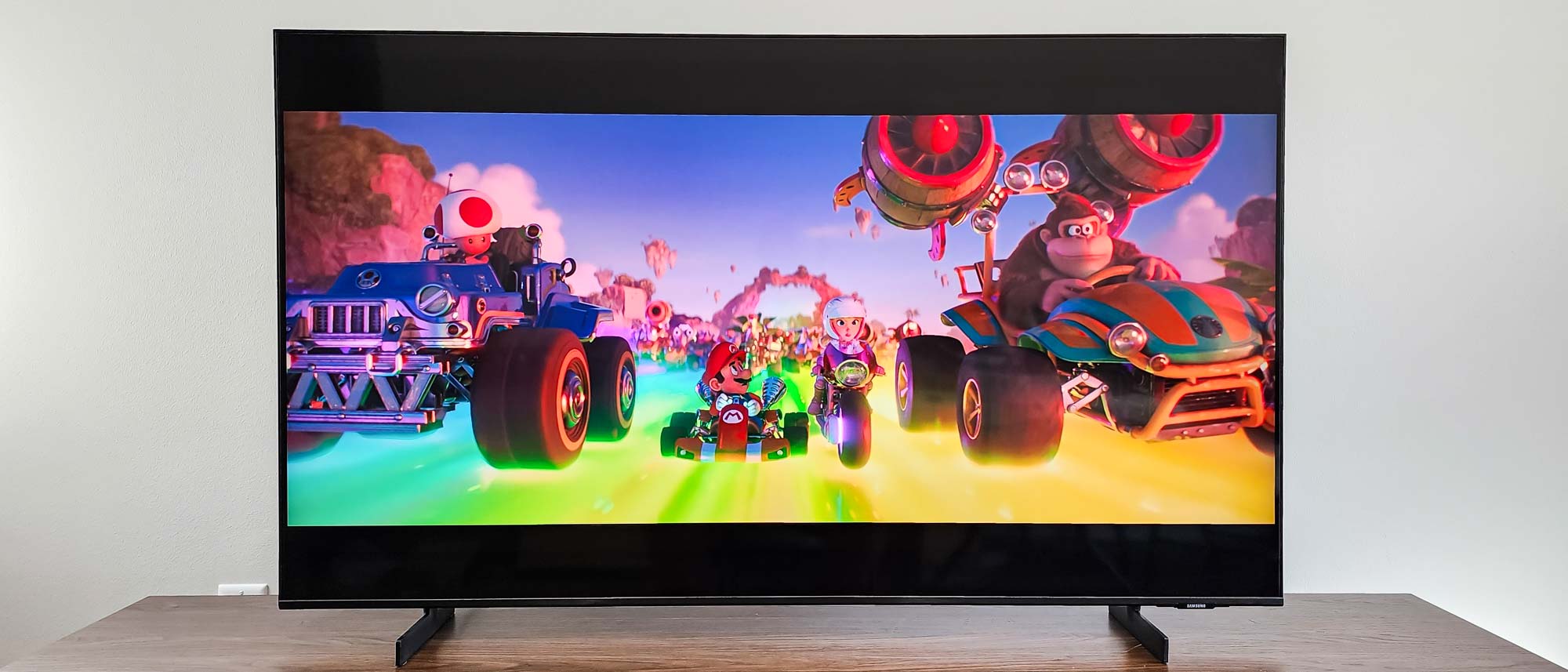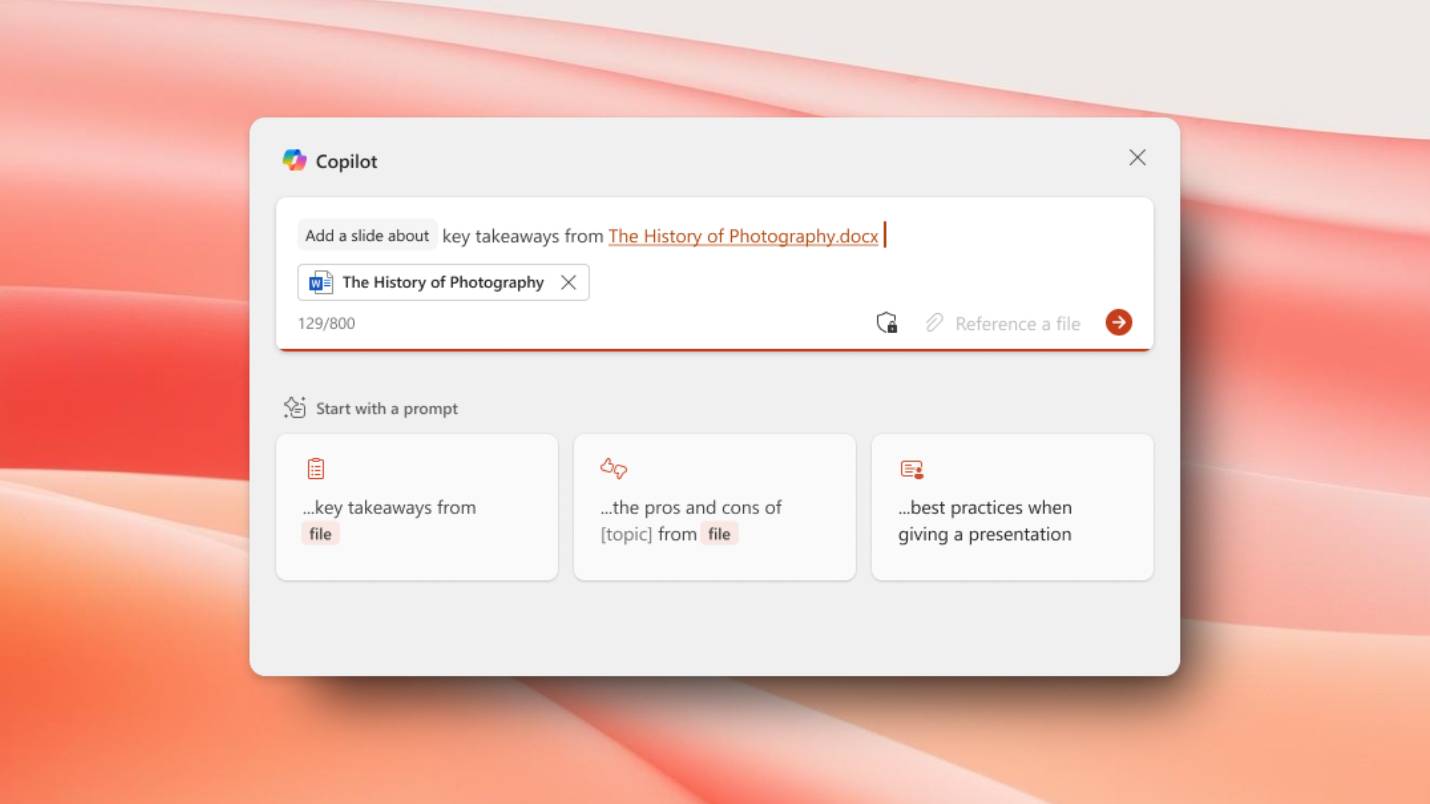Tom's Guide Verdict
The Samsung CU8000 delivers okay picture quality for a fairly low price along with low input lag for gamers and a great remote. But it struggles against the competition.
Pros
- +
Decent sound
- +
Fairly low input lag
- +
Great remote
Cons
- -
Unexceptional picture quality in most situations
Why you can trust Tom's Guide
Price: $499.99
Screen size: 55 inches
Model: UN55CU8000F
Resolution: 3,840x2,160
HDR: HDR10, HDR10+, HLG
Refresh Rate: 60Hz
Ports: 3 HDMI 2.0, 2 USB
Audio: 20W
Smart TV Software: Tizen
Size: 48.5x27.9x1 inches
Weight: 34.2 lbs.
The Samsung CU8000 TV raises the ever-important question: How low can you go? Or, rather: How low should you go? This entry-level model has one thing to solidly recommend — its very low price. Everything but the 85-inch model costs less than $1,000, and the 55-inch model we tested is a fairly cheap $479.
As long as you keep that in mind, and don’t expect a revolution of color or (especially) brightness, the CU8000 may be just fine for your needs.. This TV sounds better than you might think, and its input lag is only a tick below the sharpest Samsung standard. That might make it a smart choice in some scenarios.
Samsung CU8000 review: Pricing and availability
There are six different sizes of the CU8000, scaled to fit living rooms or bedrooms of any size:
- Samsung UN43CU8000F (43 inches): $379.99 | $349.99 on sale
- Samsung UN50CU8000F (50 inches): $429.99 | $399.99 on sale
- Samsung UN55CU8000F (55 inches): $499.99 | $479.99 on sale
- Samsung UN65CU8000F (65 inches): $629.99 | $579.99 on sale
- Samsung UN75CU8000F (75 inches): $949.99 | $799.99 on sale
- Samsung UN85CU8000F (85 inches): $1,599.99 | $1,199.99 on sale
We evaluated the 55-inch CU8000 model, but we expect that all models 75 inches and smaller will offer equivalent performance and the same basic capabilities. But because the 85-inch version uses a different panel type and offers a somewhat different slate of features (including a full collection of HDMI 2.1 ports and support for AMD FreeSync Premium), our observations and test results should not be considered relevant for that size.
Samsung CU8000 review: Design and features
With a beveled edge and an uncommonly thin profile (a mere 1 inch at its thickest), the main body of the CU8000 has a more striking look than is the case with many TVs in its price range. This isn’t so true of its stand, however, as the two feet that constitute it have a simple, unimaginatively blocky look that is functional and not much else, though they couldn’t be easier to snap into place (with no screwdrivers required). If you prefer, of course, you can mount the TV on the wall using the 200x200mm VESA holes on the (largely nondescript) back panel.
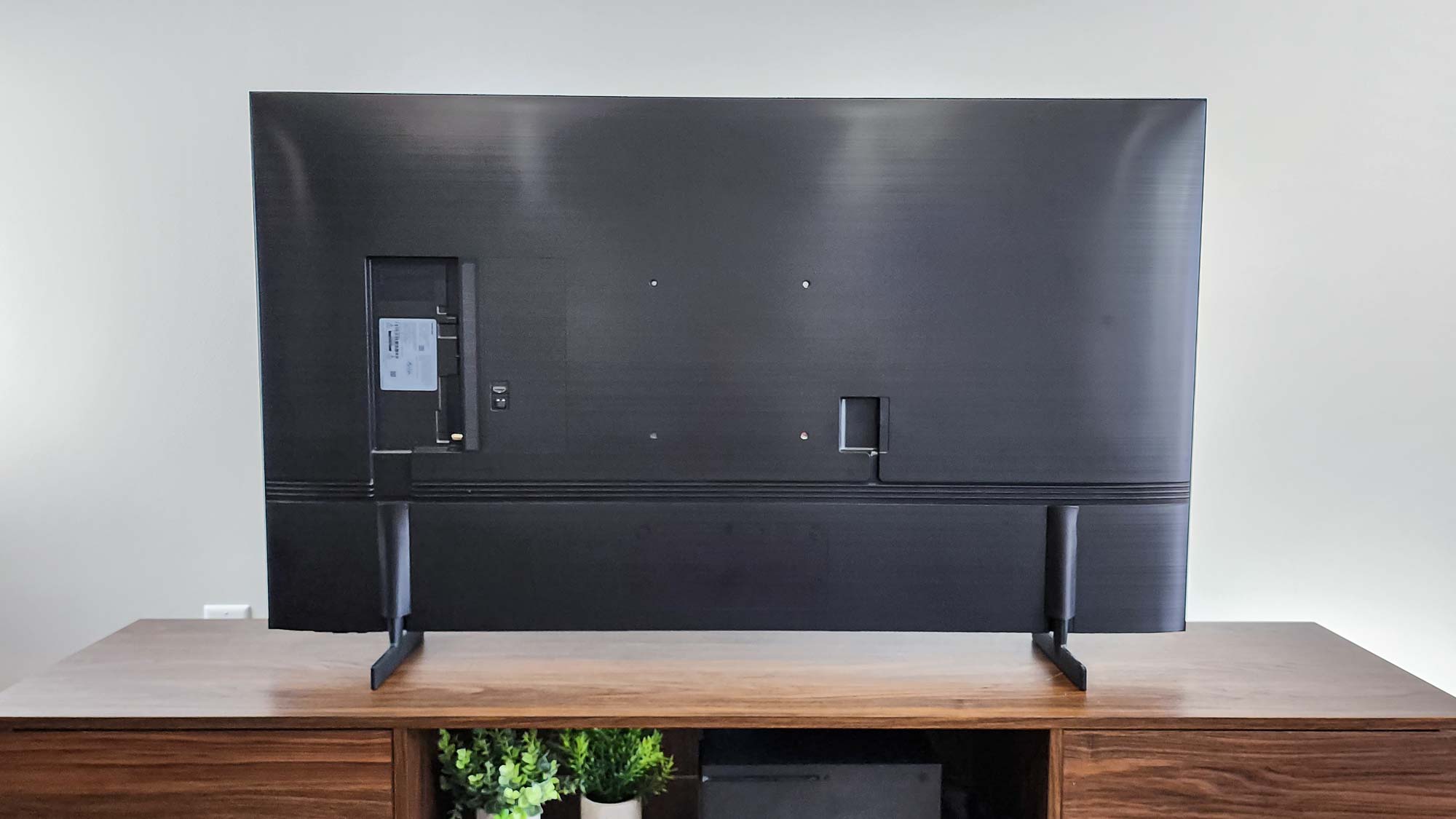
That’s also where you’ll find the simple collection of ports: two USB, Ethernet, two HDMI, and coaxial, all facing out the TV’s right edge, and the S/PDIF optical audio out and a third HDMI port facing straight back. Because on all but the largest CU8000 model the HDMI ports support only the older 2.0 standard, you won’t have faster 120Hz refresh rates or access to newer and fancier gaming features like Variable Refresh Rate (VRR).
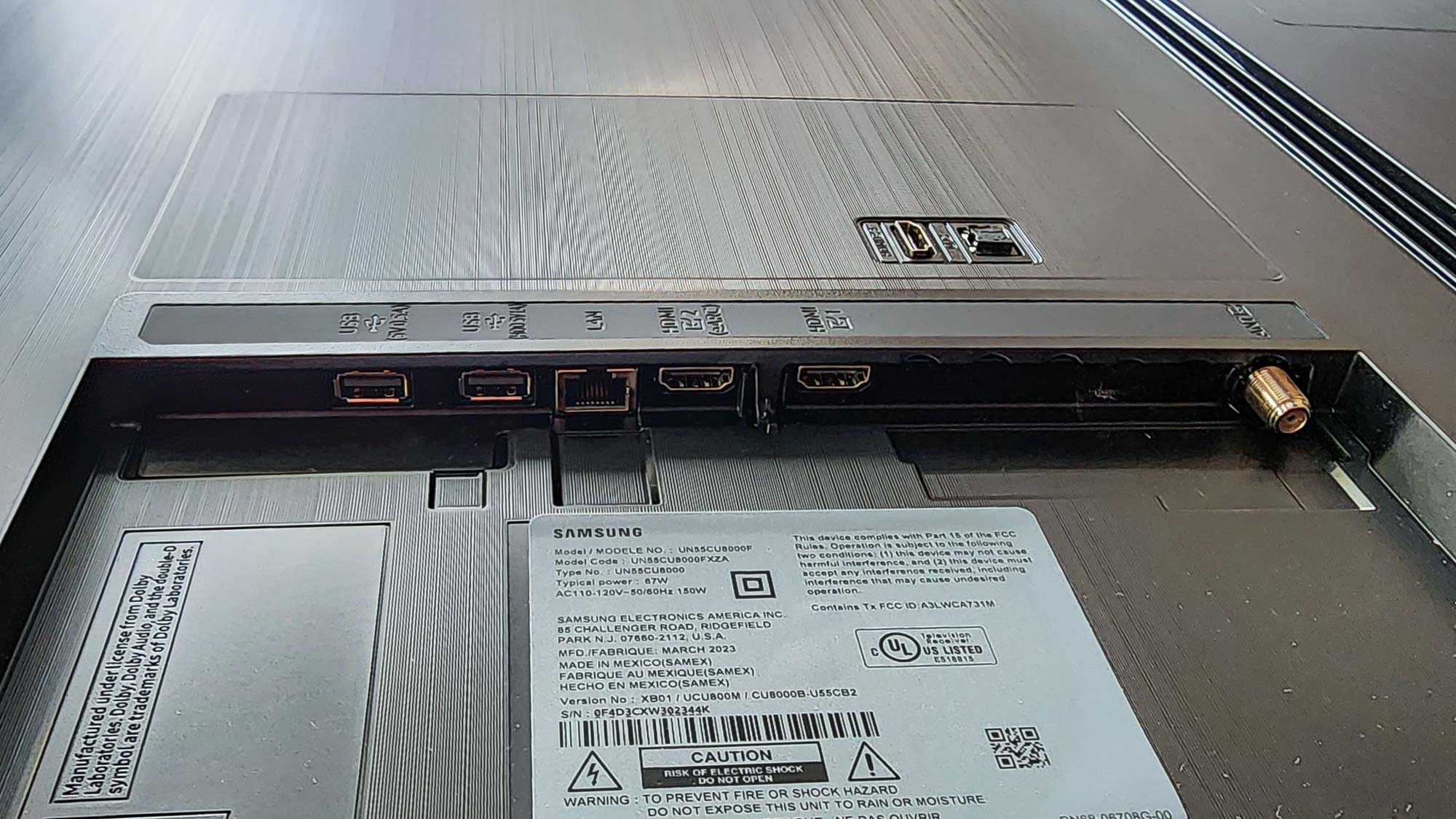
The CU8000 uses a simplified version of Samsung’s Tizen smart interface, which gets you where you need to go to access apps or live programming but does so with a minimum of finesse. The platform is showing its age, and a moderate rethink would go a long way to make interacting with the TV a smoother and more satisfying experience.
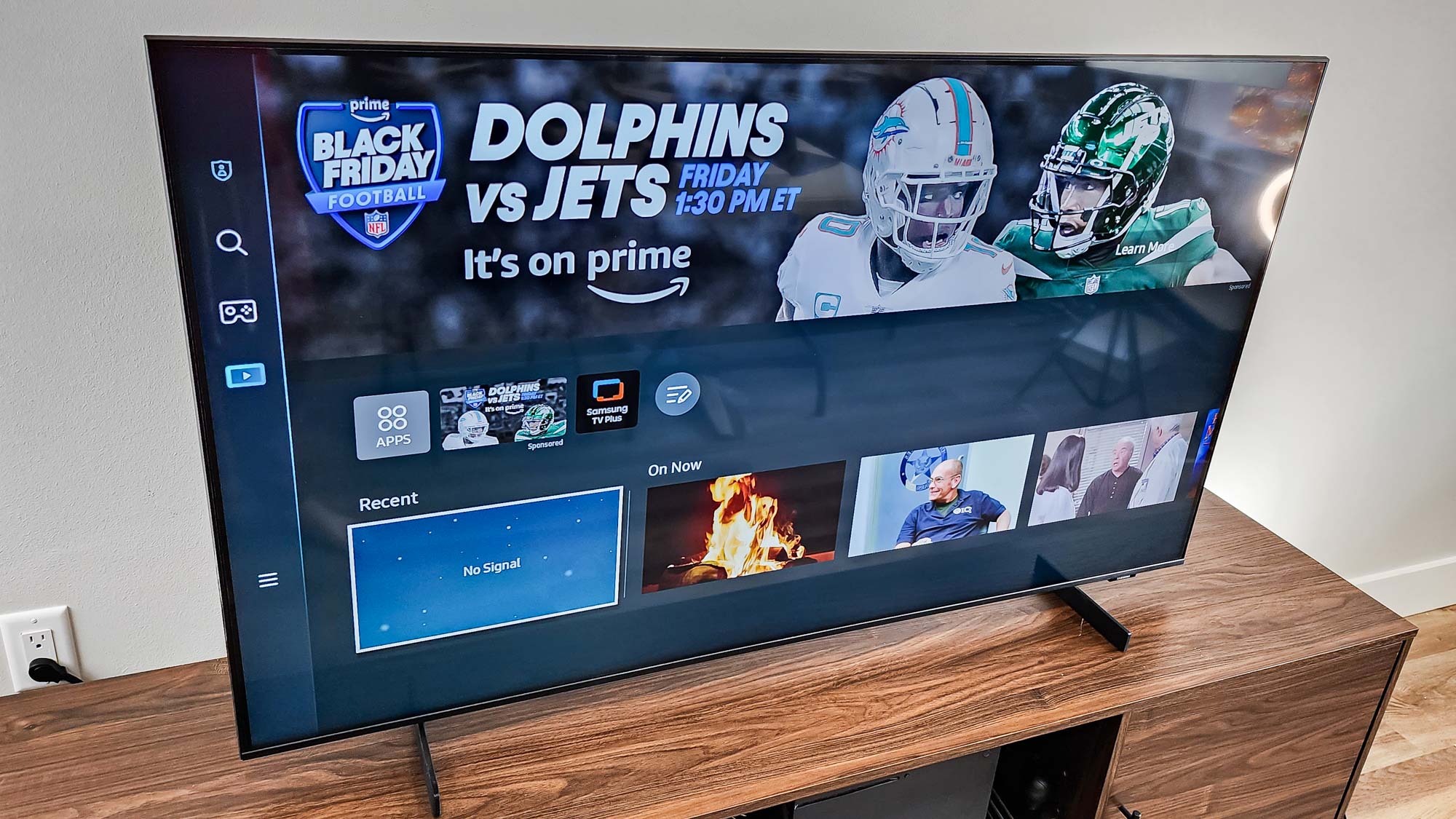
The remote control included with the CU8000 couldn’t be fresher: It’s a miniature, no-nonsense model Samsung calls its SolarCell Remote, as it’s equipped with, well, a solar cell on the back that obviates the need for changing batteries.
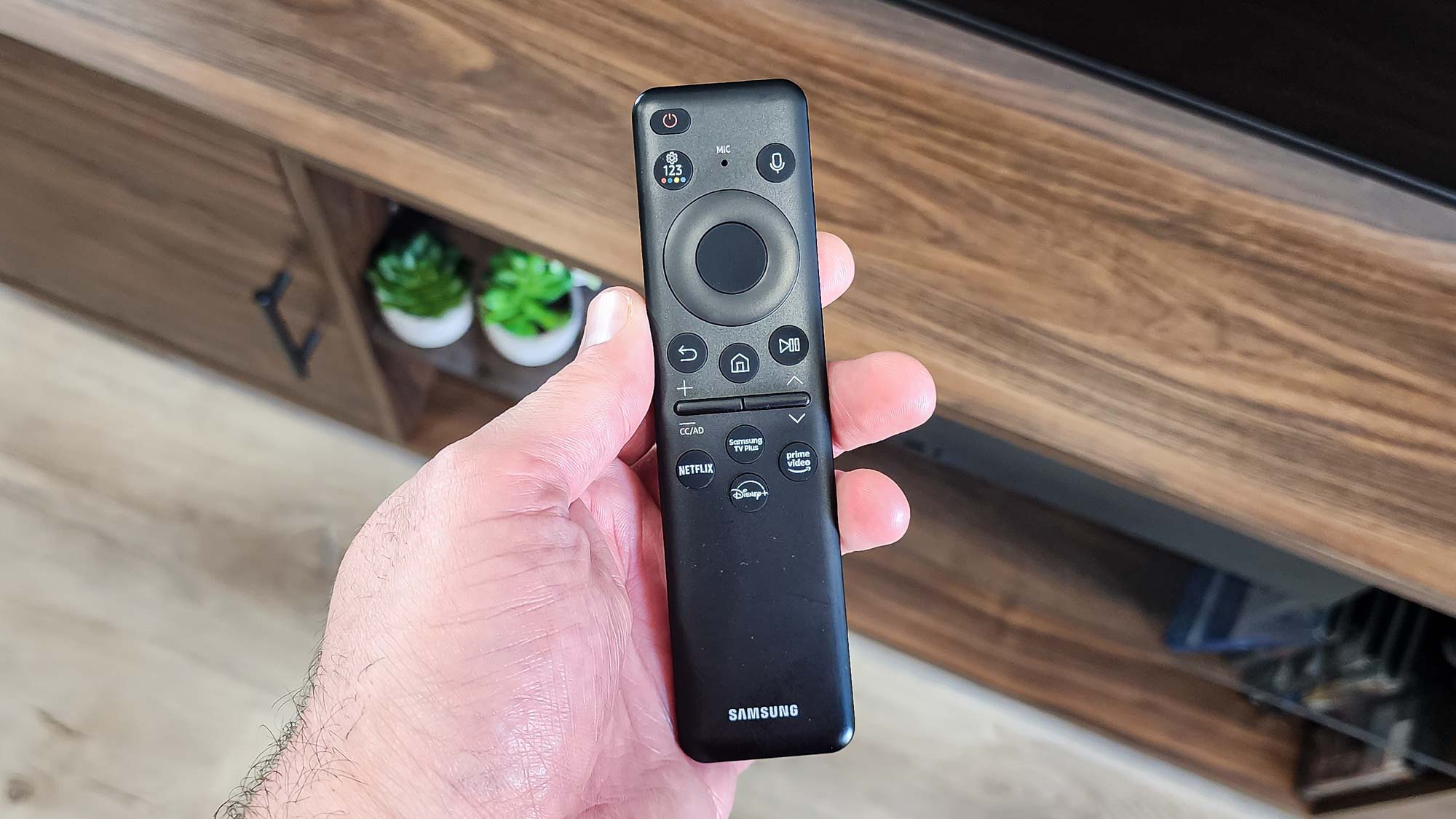
I still think the remote is a little too simplified—no mute button?—but its crisp layout and that solar panel do a lot to help recommend it.
Samsung CU8000 review: How we test
For every TV we review at Tom’s Guide, we conduct a series of technical and subjective tests designed to measure the set’s performance. For our technical tests, we use an X-Rite i1 Pro spectrophotometer, a SpectraCal VideoForge Pro pattern generator, and Portrait Displays’ Calman TV-calibration software, and we add a Leo Bodnar 4K Input Lag Tester for measuring the TV’s gaming prowess. Subjective tests vary based on the reviewer, but typically include a diverse selection of movies, TV shows, and other content reflecting the types of things you may actually want to watch on the TV.
For a more detailed look at what we do and how we do it, check out our “How We Test TVs” page.
Samsung CU8000 review: Performance and test results
You might anticipate that the CU8000, a standard LED TV with no local dimming, would not have a great deal to offer in the picture quality department — and you would be correct. In our tests, brightness never cracked 300 nits, even with HDR content, and most of the time it was a lot lower (especially in the “best” picture mode, Filimmaker, where we measured 197 with SDR and 233 with HDR).
| Row 0 - Cell 0 | Samsung CU8000 | Hisense U6K | Samsung Q60C | Sony Bravia X75K |
| SDR Brightness (10%, in nits) | 197 | 334 | 233 | 157 |
| Delta-E (lower is better) | 2.1323 | 3.5783 | 1.6547 | 2.0027 |
| Rec. 709 Gamut Coverage | 98.6503 | 99.4728 | 99.5648 | 93.5566 |
| HDR Brightness (10%, in nits) | 233 | 525 | 356 | 295 |
| UHDA-P3 Gamut Coverage | 86.59 | 97.16 | 92.62 | 78.52 |
| Rec. 2020 Gamut Coverage | 63.13 | 72.13 | 70.35 | 57.57 |
| Input Lag (ms) | 10.4 | 10.2 | 9.0 | 9.7 |
Its color handling was a bit better, if still unremarkable: a Delta-E value (representing the difference in color between the source and what’s displayed on the screen, with lower numbers being better) of 2.1323 and Rec. 709 (SDR) color gamut coverage of 98.6503%. (Its HDR gamut coverage was on the overall low side, but not the lowest we’ve seen in this price range.) With the exception of color accuracy, the Hisense U6K bettered the CU8000 straight across the board.
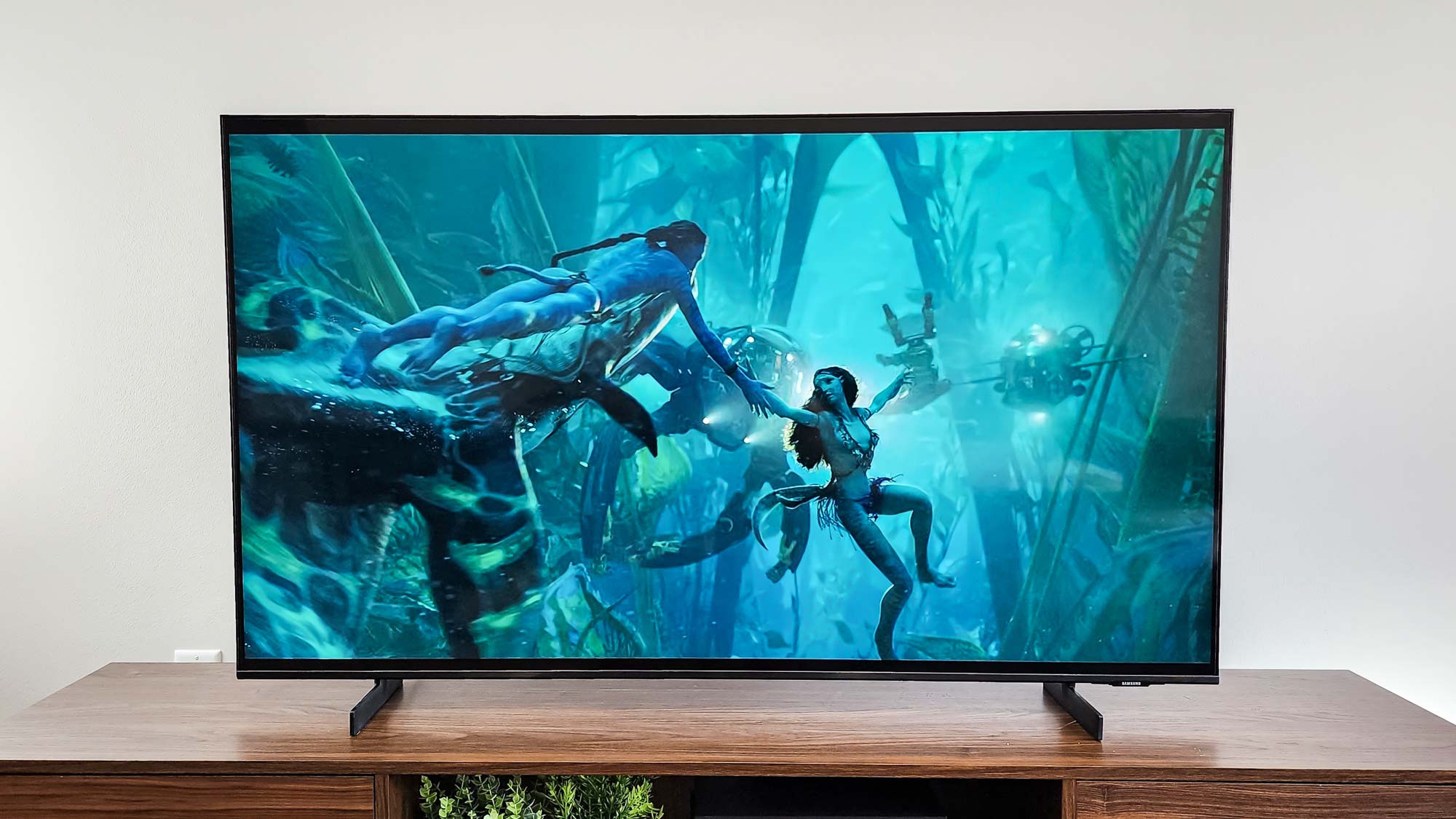
Most movies we viewed looked fine, though color-critical titles such as The Super Mario Bros. Movie and Avatar: The Way of Water, did look a bit off, which makes sense. Super-fast action in movies like Top Gun: Maverick got a little chunky at times due to the 60Hz panel, but was mostly a minimal issue. Reflections from the screen were a frequent problem, spoiling dark patches of picture in almost everything we watched, most notably Mission: Impossible—Dead Reckoning Part One. The CU8000 never looks awful, but to the extent it’s ideal for anything, it’s for use in darkened rooms.
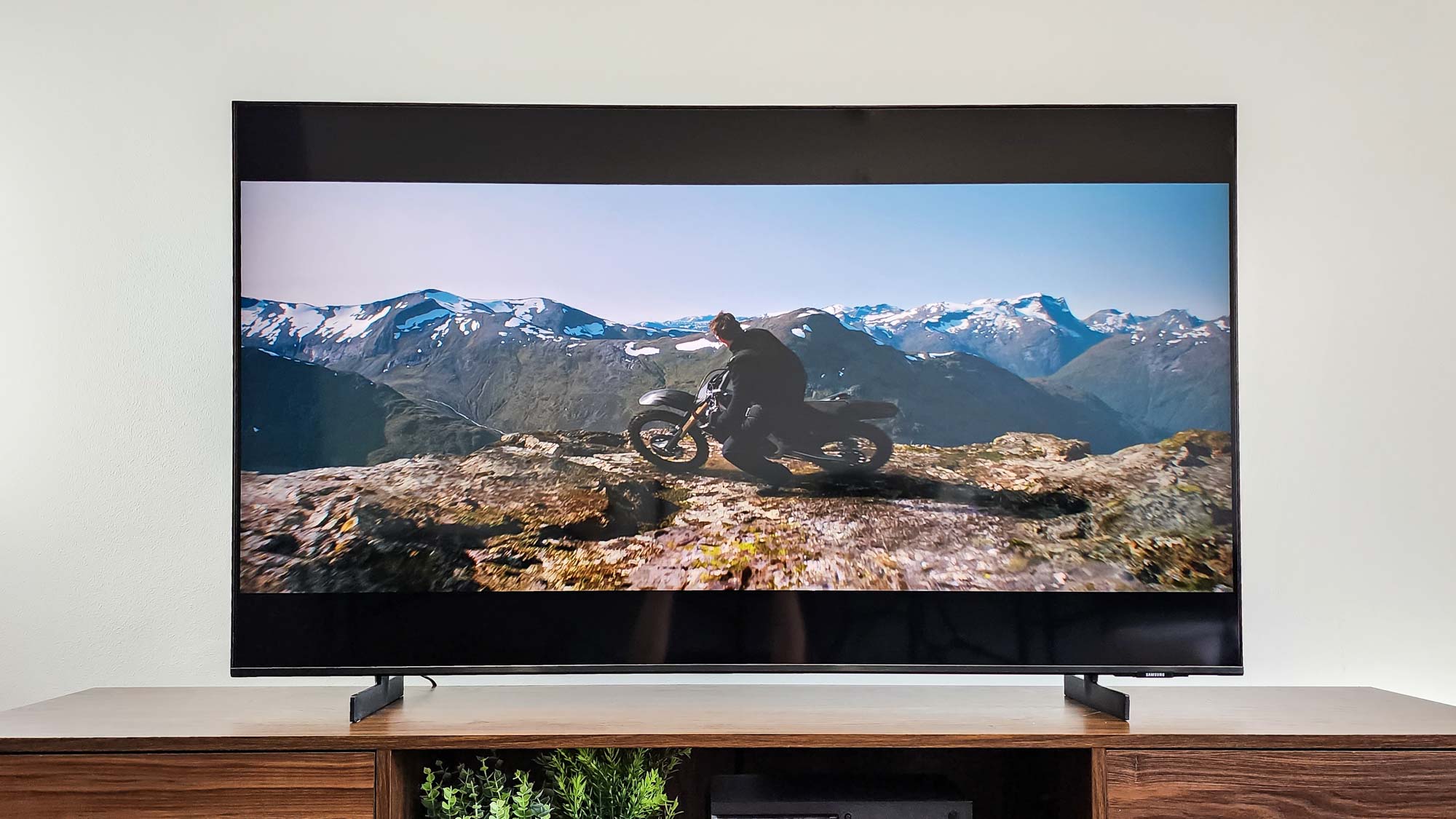
The slower panel and the lack of HDMI 2.1 does limit gaming potential on the CU8000, though its input lag of 10.4ms is highly respectable. (Higher-end Samsung TVs invariably crack our 10ms threshold for top-tier responsiveness, but the CU8000 gets close enough to pass here.) The TV will automatically switch to game mode when you use a console, which is nice. Samsung’s Gaming Hub within Tizen, which collects all your consoles, titles, and music in one place, remains better as an idea than in execution: Accessing it from the main menu is a bit clunky, and whether it truly benefits from its own “app” remains an open question.
We do have to give the CU8000 credit for one thing: Its sound is better than expected. The 20W speaker system won’t blow you away with its volume or bass, but the sound remains clear and free of distortion no matter how high you crank it. That’s never a given on any TV, let alone a budget model, so it’s definitely something to applaud here.
Samsung CU8000 review: Verdict
The Samsung CU8000 exists largely because of its price, and keeping that in mind explains — and justifies — a lot. Need something that plays games decently, sounds okay and can easily entertain the kids? Here you go.
The challenge, though, is that the CU8000 isn’t alone in this price range. Other TVs, most notably the Hisense U6K, are priced about the same — or maybe even less — and are outfitted with similar features while also providing significantly higher picture quality. That makes the CU8000 a tough sell, even if it doesn’t get a lot wrong.
Matthew Murray is the head of testing for Future, coordinating and conducting product testing at Tom’s Guide and other Future publications. He has previously covered technology and performance arts for multiple publications, edited numerous books, and worked as a theatre critic for more than 16 years.
